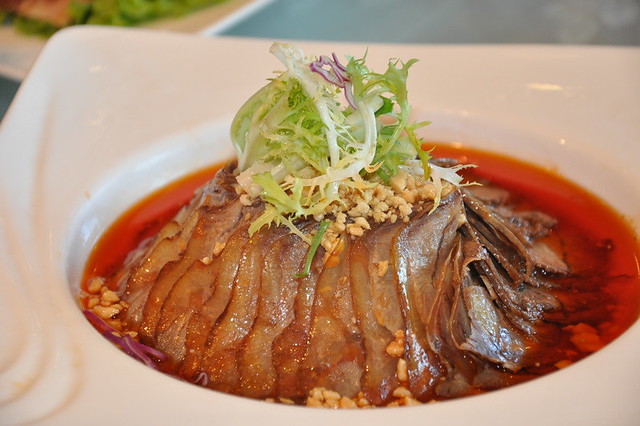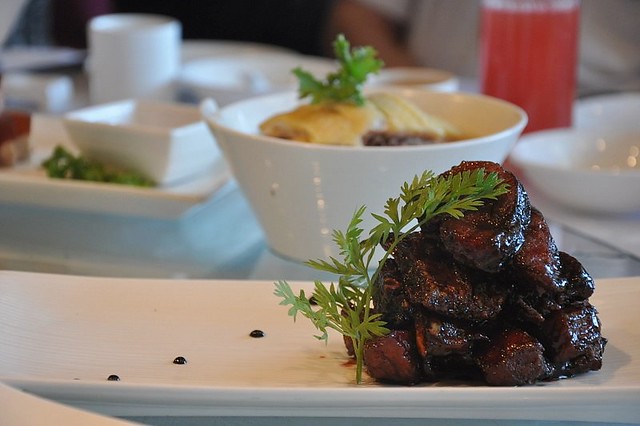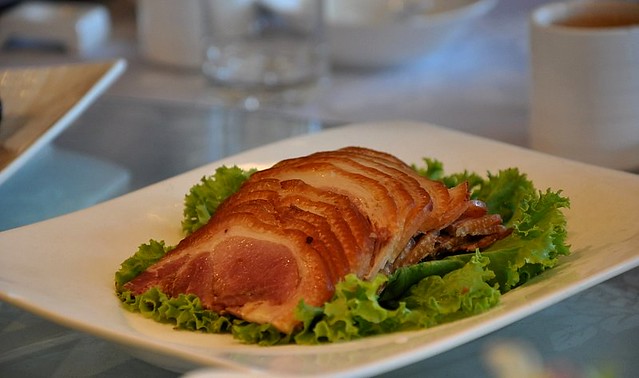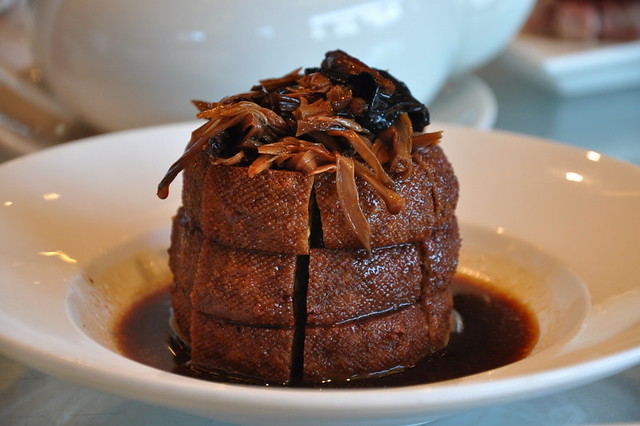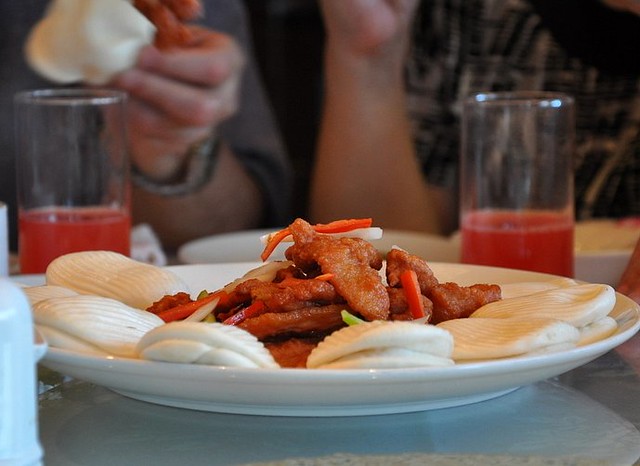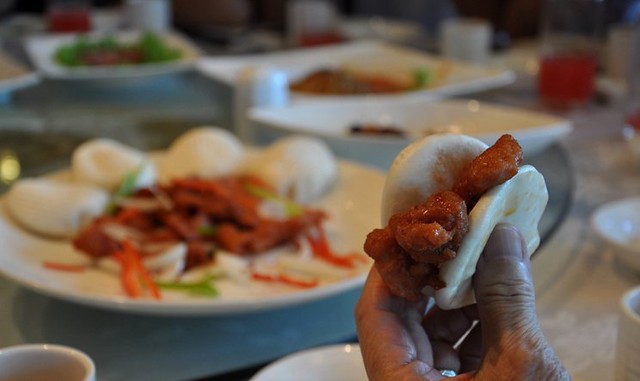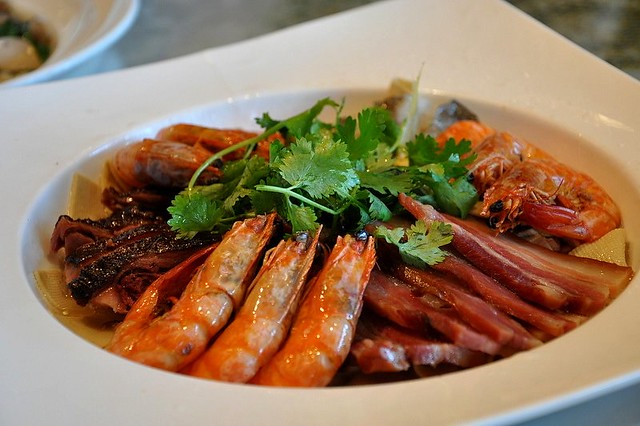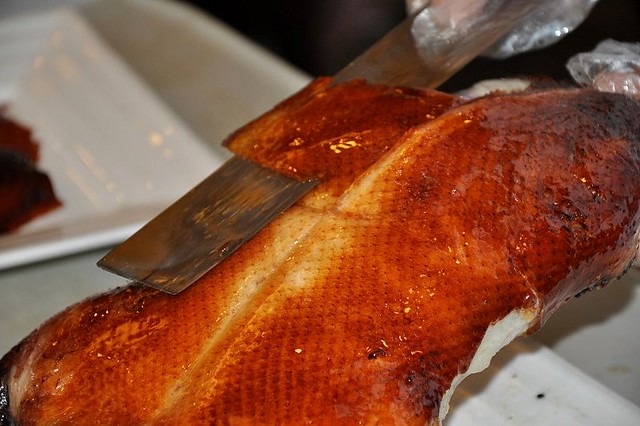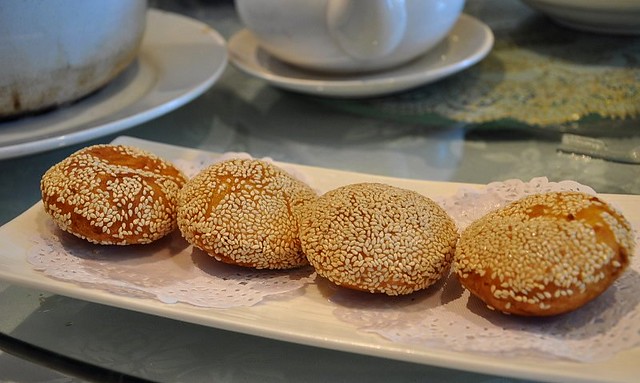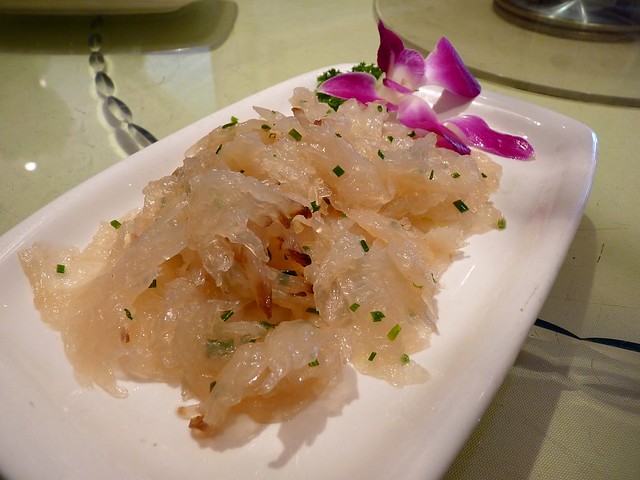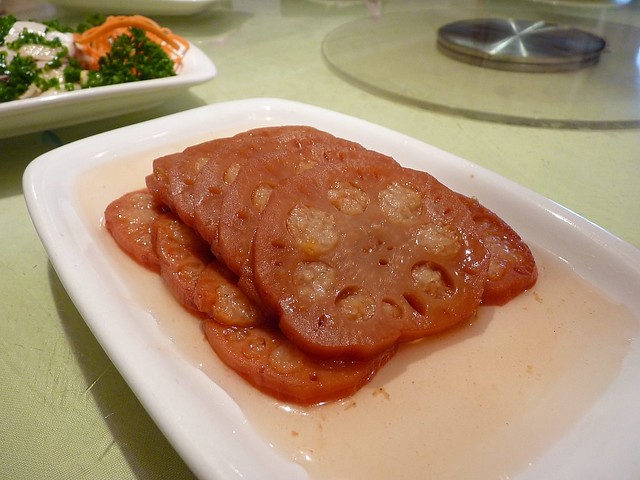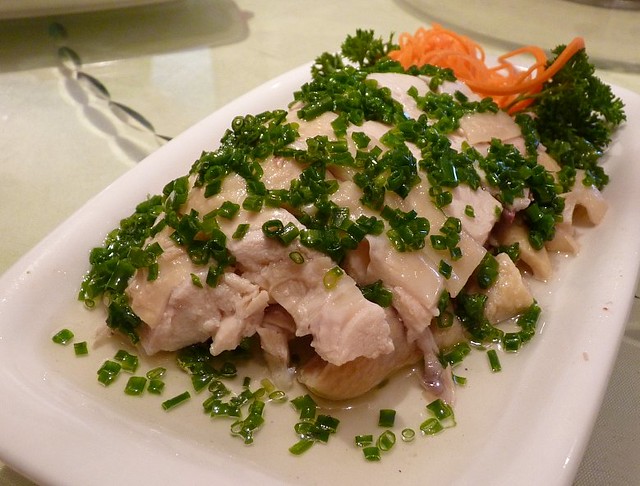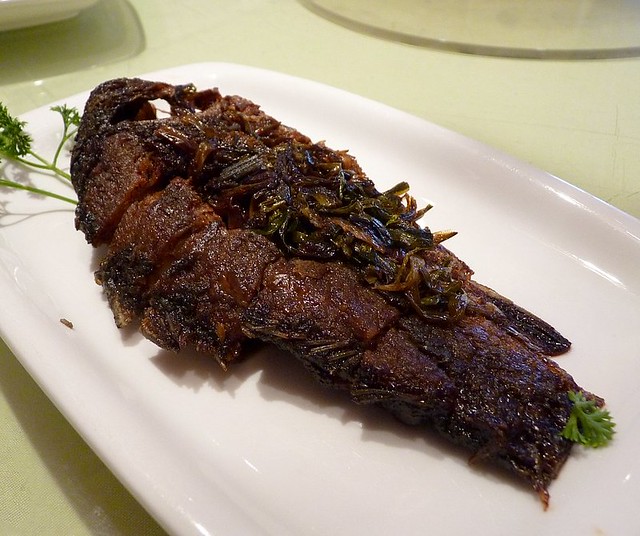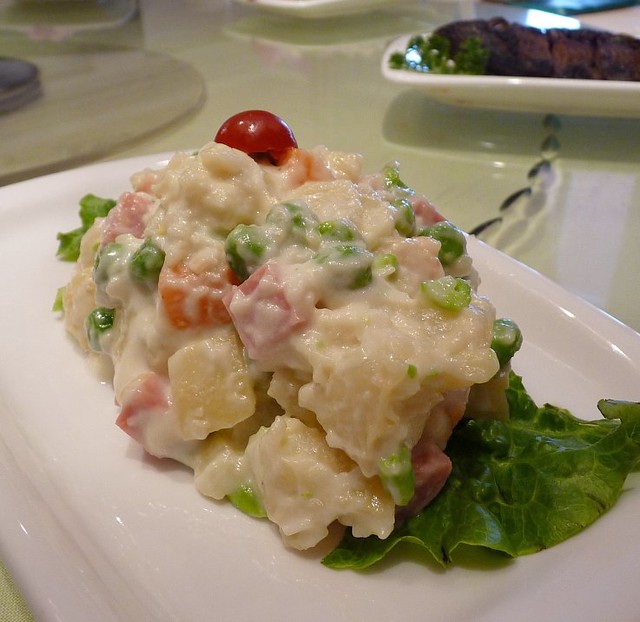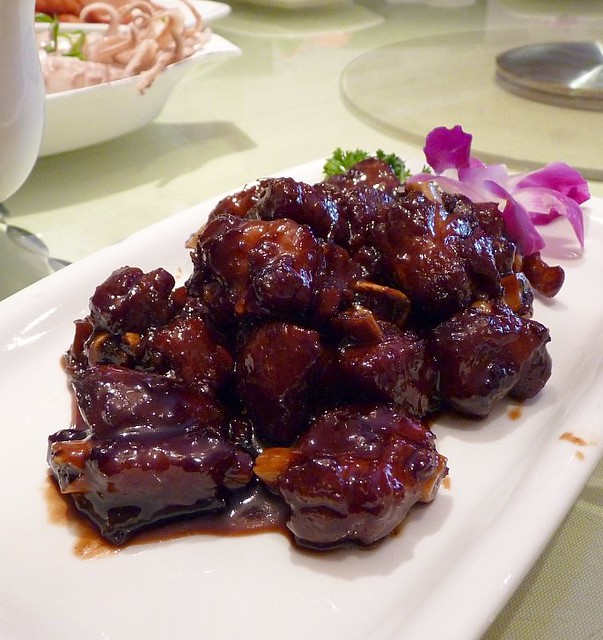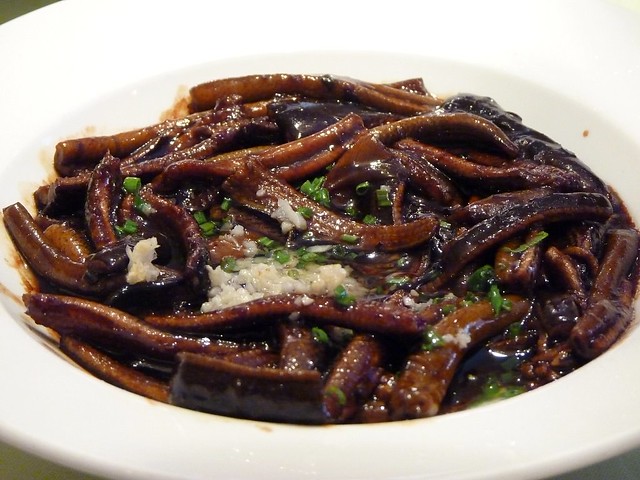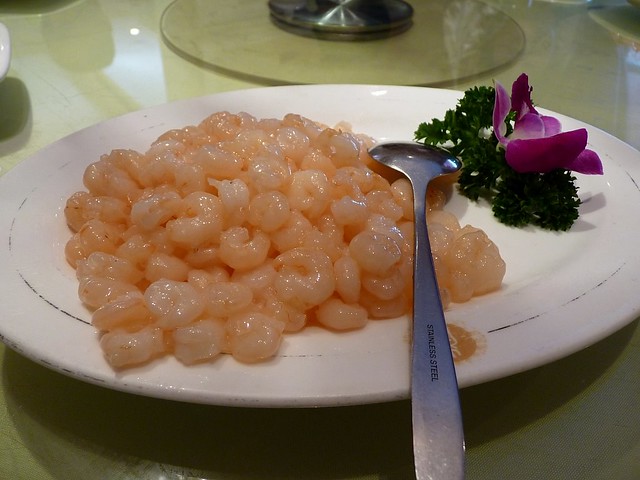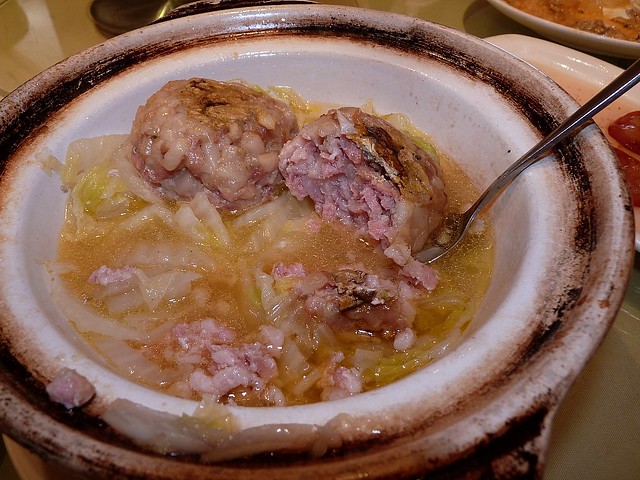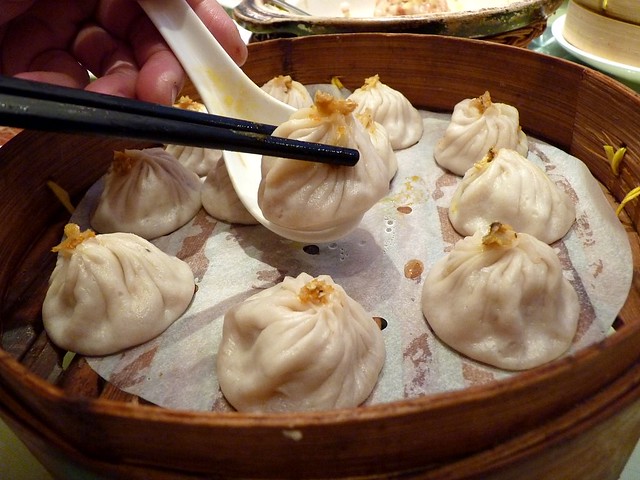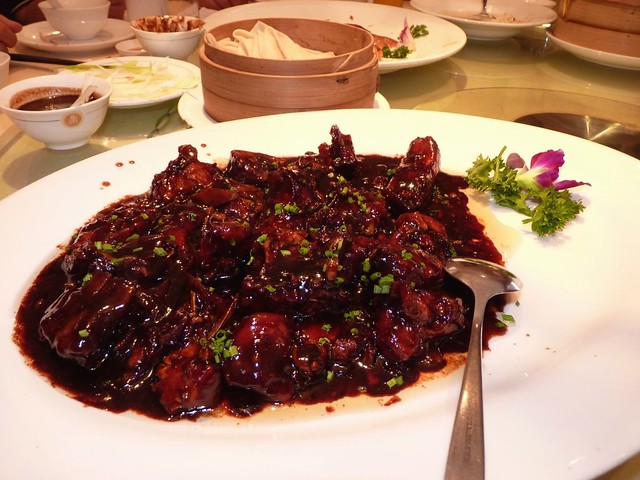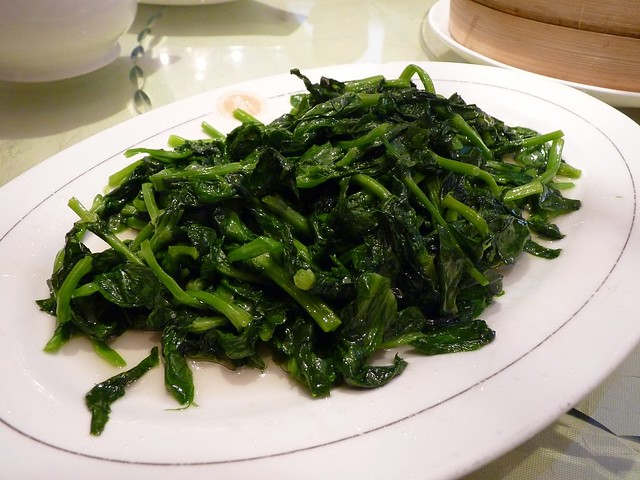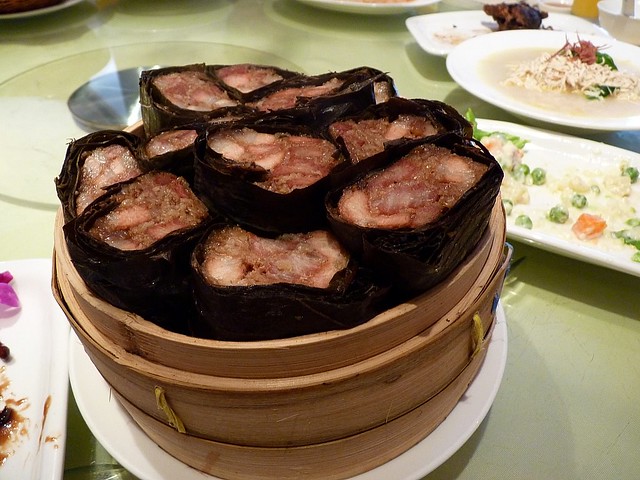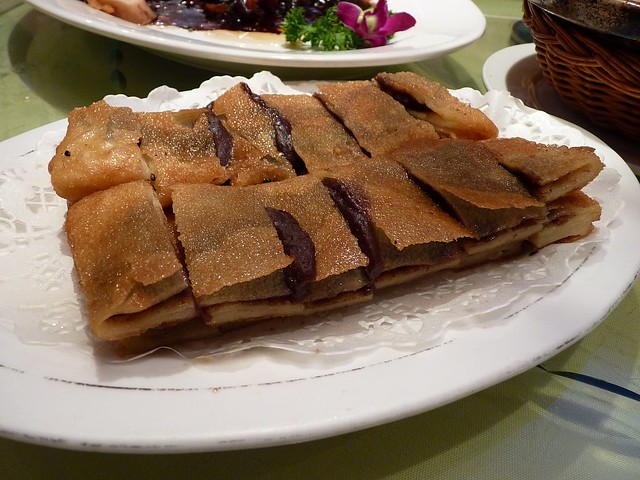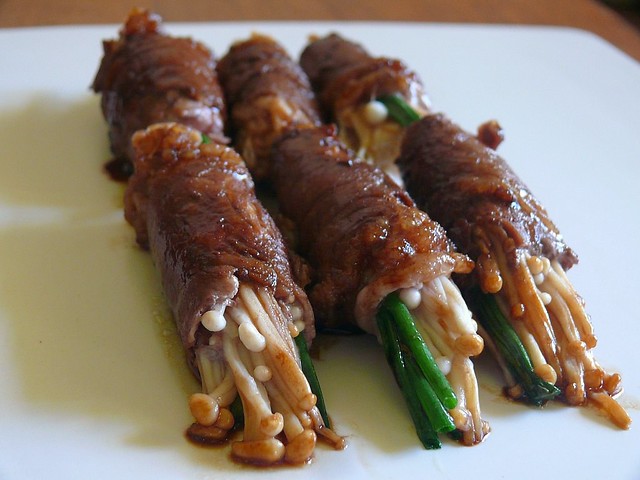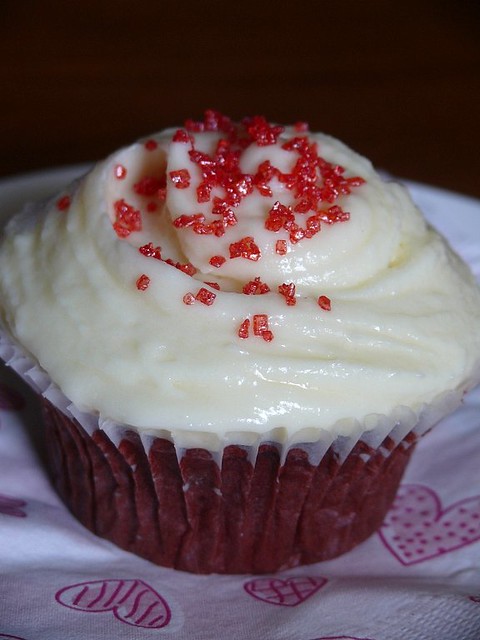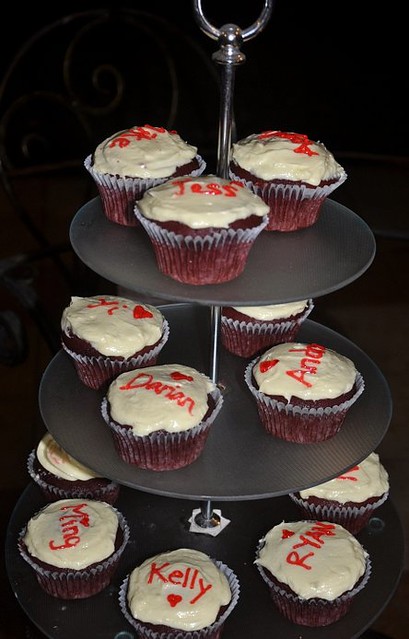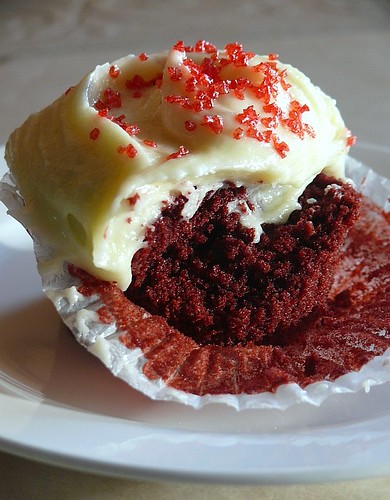My wish has come true. Now there's a place for sandwiches worthy for my alimentary canal. There aren't any good delis in this big town small city and the only places for a decent sandwich are the 5-star hotels where a sandwich with drinks can set you back by RM50/USD16.40.
Party Play has come to the rescue, with set meals at RM12.90/USD4.20 which can be a sandwich or pasta or curry that comes with a small salad, a dessert and a drink. I've been to PP twice this month and each time my craving was for their sandwich set.
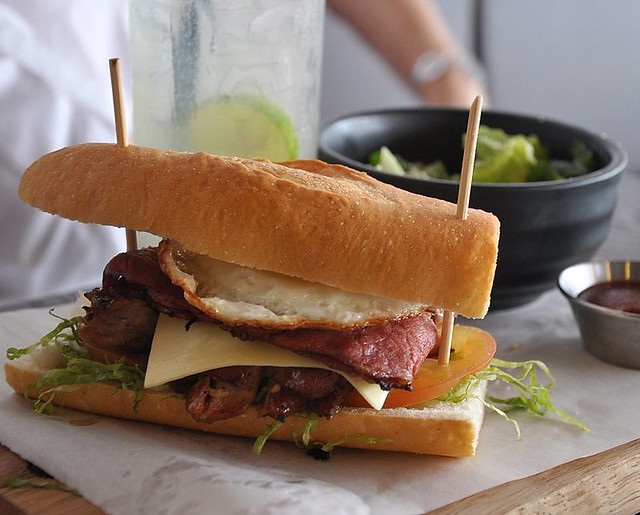
PP's very delicious sandwich is loaded and large enough to feed two small eaters. The set sandwich comes with a nice Caesar salad but a better replacement (which they allow) is PP's house salad, which is loaded with pine nuts and other goodies and a divine dressing. Pity though that the salad greens are finely cut up and confined to a small bowl, making them soggy. PP's baguettes are extremely crispy-crusty and thin-skinned; they remind me of Spanish flat baguettes, unlike the thick-skinned baguettes in many hotels (Hyatt for example), which are made for prehistoric men with sharpened canines. PP's baguettes are for tai tais.
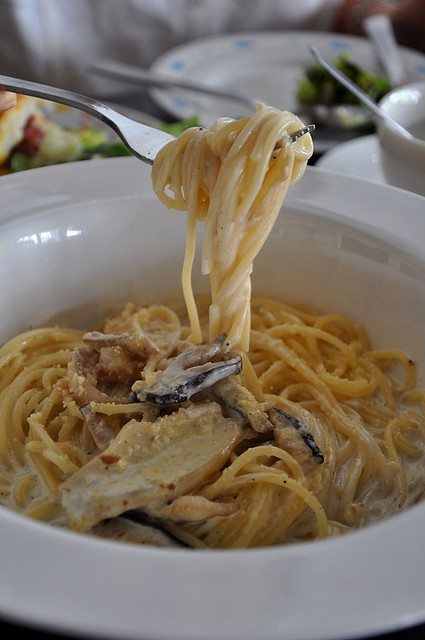
Creamy mushroom pasta, very tasty. I stand corrected by MG, who said the cream was too runny and she's right. I only had two bites of my friend's pasta.
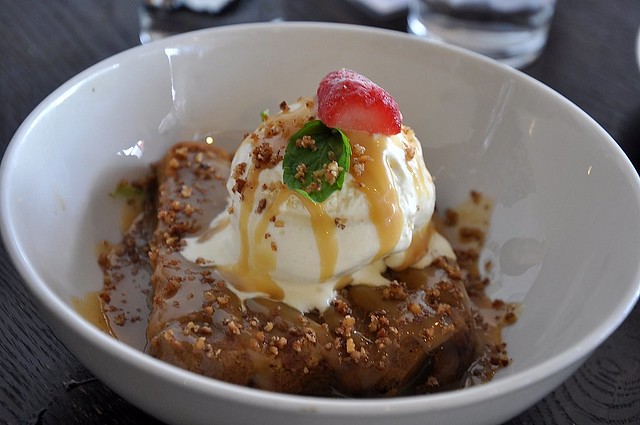
Sticky date pudding, RM10/USD3.30. Hmm. This one's tricky. While the flavor's great, I'm not sure about the texture, which was sticky, gummy and very much like a pudding. You know how it's like with first great impressions of food/boyfriends/dogs: you measure all subsequent ones against them. My first sticky date pudding was warm and cake-like and I think that's the way I like it.
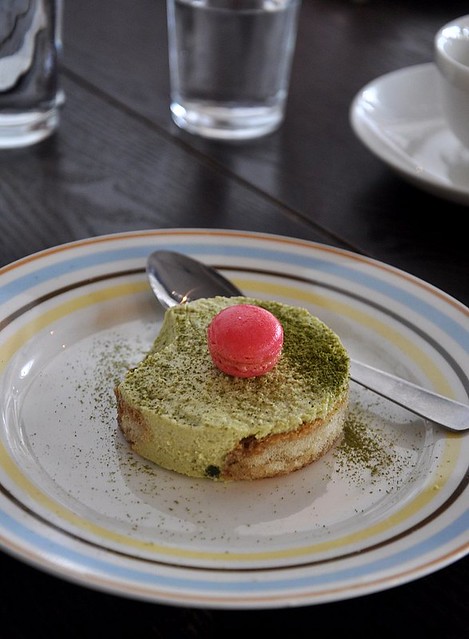
The set meals came with green tea tiramisu which all my friends enjoyed but which I thought was just okay. I'm suddenly tired of the wet soft texture of tiramisu. But I do like PP's desserts. Quality. Taste. Simple presentation (that's a mini macaron on the tiramisu). Affordable. I also liked that their desserts are not too sweet. I'm making this my regular lunch joint.
Party Play
Lot 21-0
Lorong Lintas Plaza 3,
Lintas Plaza, 88300
Kota Kinabalu
--to locals, this means PP is diagonally across from Bake With Me. You should know where that is.
Tel: 088 218 210
p.s. PP's set lunches are value for money. Otherwise, expect to pay as much as other western restaurants.
Party Play has come to the rescue, with set meals at RM12.90/USD4.20 which can be a sandwich or pasta or curry that comes with a small salad, a dessert and a drink. I've been to PP twice this month and each time my craving was for their sandwich set.

PP's very delicious sandwich is loaded and large enough to feed two small eaters. The set sandwich comes with a nice Caesar salad but a better replacement (which they allow) is PP's house salad, which is loaded with pine nuts and other goodies and a divine dressing. Pity though that the salad greens are finely cut up and confined to a small bowl, making them soggy. PP's baguettes are extremely crispy-crusty and thin-skinned; they remind me of Spanish flat baguettes, unlike the thick-skinned baguettes in many hotels (Hyatt for example), which are made for prehistoric men with sharpened canines. PP's baguettes are for tai tais.

Creamy mushroom pasta,

Sticky date pudding, RM10/USD3.30. Hmm. This one's tricky. While the flavor's great, I'm not sure about the texture, which was sticky, gummy and very much like a pudding. You know how it's like with first great impressions of food/boyfriends/dogs: you measure all subsequent ones against them. My first sticky date pudding was warm and cake-like and I think that's the way I like it.

The set meals came with green tea tiramisu which all my friends enjoyed but which I thought was just okay. I'm suddenly tired of the wet soft texture of tiramisu. But I do like PP's desserts. Quality. Taste. Simple presentation (that's a mini macaron on the tiramisu). Affordable. I also liked that their desserts are not too sweet. I'm making this my regular lunch joint.
Party Play
Lot 21-0
Lorong Lintas Plaza 3,
Lintas Plaza, 88300
Kota Kinabalu
--to locals, this means PP is diagonally across from Bake With Me. You should know where that is.
Tel: 088 218 210
p.s. PP's set lunches are value for money. Otherwise, expect to pay as much as other western restaurants.



